Art World
The Eternal ‘Fountain’: See 12 Modern-Day Artists Make Brilliant Use of Duchamp’s Toilet
From John Baldessari to Ai Weiwei, artists have long bowed down to Duchamp's urinal.
![Kathleen Gilje, Sant’Orinale [Saint Urinal] (2017). Image courtesy Francis M. Naumann Fine Art, LLC. Kathleen Gilje, Sant’Orinale [Saint Urinal] (2017). Image courtesy Francis M. Naumann Fine Art, LLC.](https://news.artnet.com/app/news-upload/2017/04/IMG_0172-798x1024.jpg)
From John Baldessari to Ai Weiwei, artists have long bowed down to Duchamp's urinal.
![Kathleen Gilje, Sant’Orinale [Saint Urinal] (2017). Image courtesy Francis M. Naumann Fine Art, LLC. Kathleen Gilje, Sant’Orinale [Saint Urinal] (2017). Image courtesy Francis M. Naumann Fine Art, LLC.](https://news.artnet.com/app/news-upload/2017/04/IMG_0172-798x1024.jpg)
Artnet News

Contrary to popular belief, Marcel Duchamp’s Fountain was not actually seen in the First Exhibition of the Society of Independent Artists in New York City, which opened 100 years ago this Monday. The now-iconic urinal, signed “R. Mutt,” was submitted—but it was excluded from the show by the organizers.
Fountain is excluded no longer. A century on, this rude found-object sculpture is easily considered one of the pioneering gestures of Modern art, endlessly talked about, riffed on, and referenced.
In honor of the long shadow cast by Fountain, the Duchamp specialists at New York’s Francis M. Naumann Fine Art have just kicked open the doors on “Marcel Duchamp Fountain: An Homage,” gathering together an impressive selection of artworks that reference Duchamp’s urinal. These tributes range from deadpan direct appropriations by Sturtevant to more reverent homages, like Kathleen Gilje’s wood-panel work (above), which employs the meticulous idiom of classical devotional art to create an anachronistic homage to Duchamp.
Here are 12 or our favorite riffs from the show:
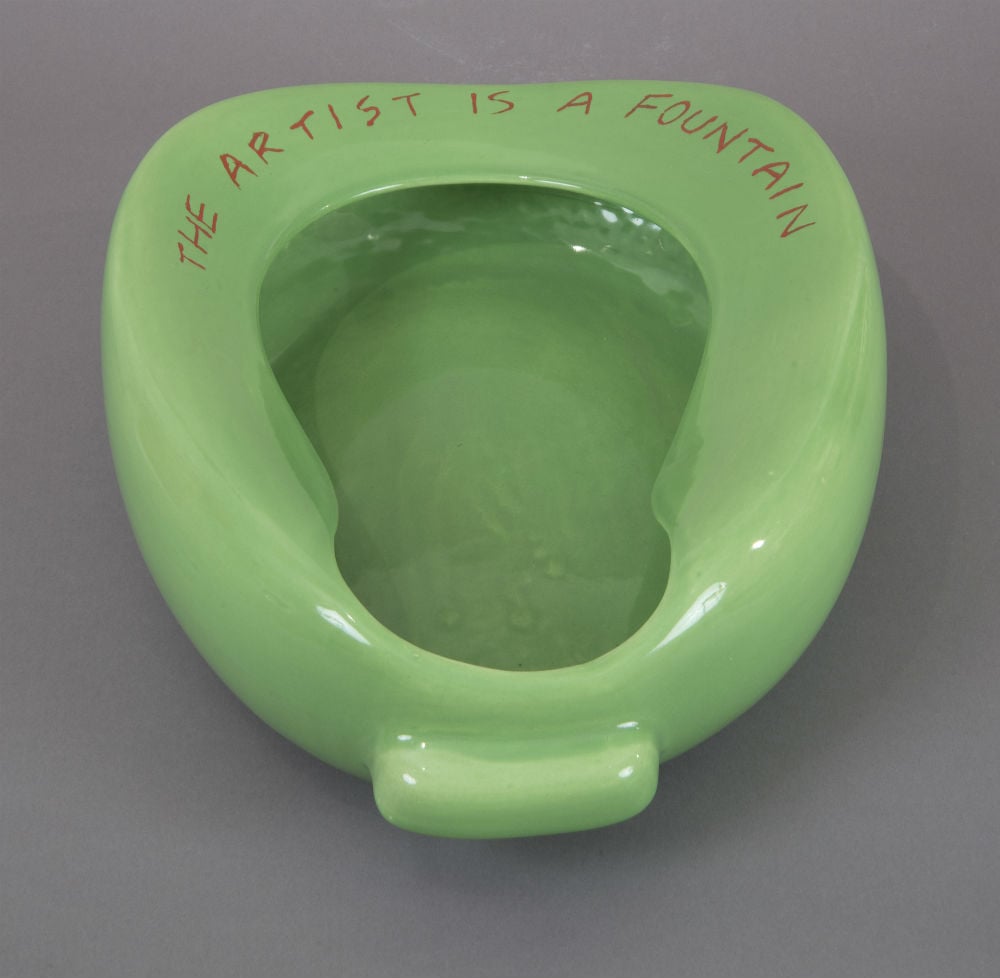
John Baldessari,
Repository (2002). Image courtesy Francis M. Naumann Fine Art, LLC.
Duchamp’s 1963 retrospective in Pasadena was a huge influence on John Baldessari, one of the big figures of West Coast conceptual art. His ceramic bedpan, Repository, with its inscription “The Artist Is a Fountain,” couldn’t be more explicit in the lineage it draws.
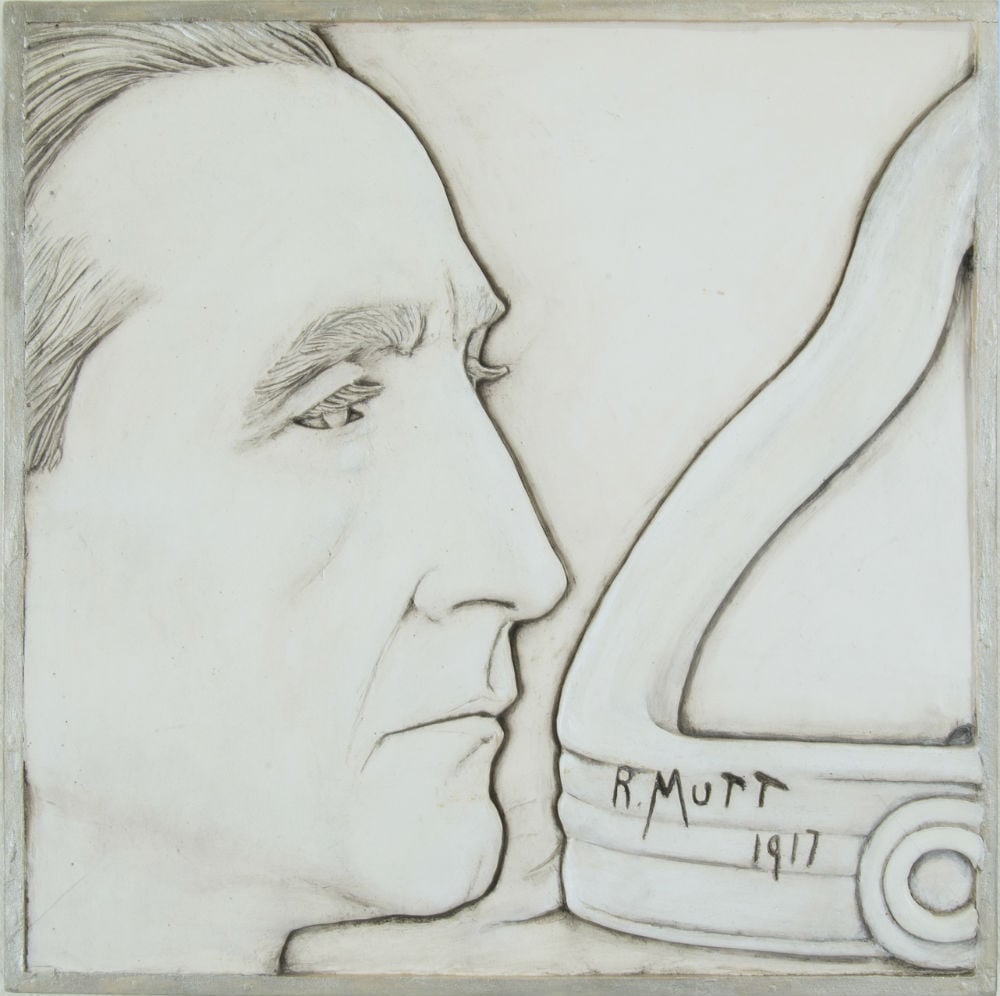
Jonathan Santlofer, Portrait of Richard Mutt (1996). Image courtesy Francis M. Naumann Fine Art, LLC.
Here’s a bas-relief homage to Fountain and its maker, molded from gypsum cement.
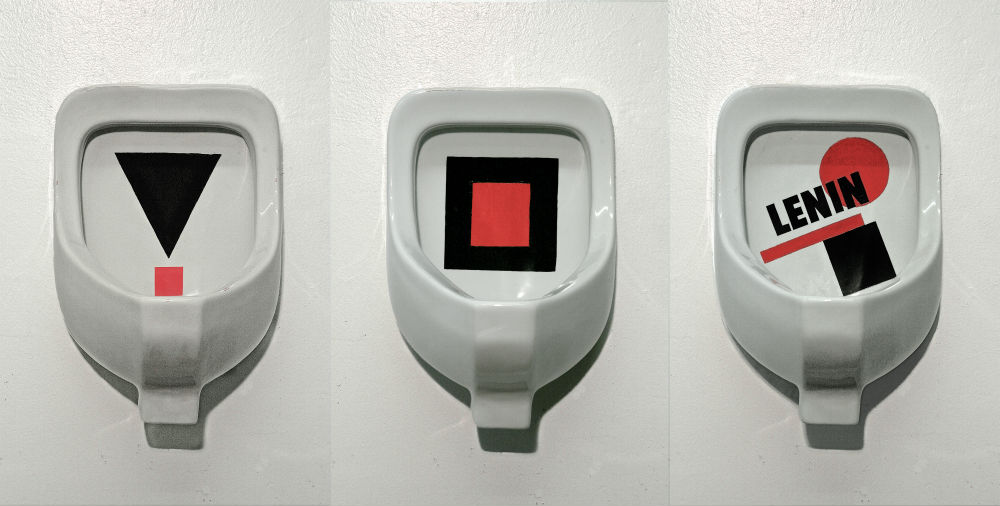
Alexander Kosolapov, Russian Revolutionary Porcelain (1989-90). Image courtesy Francis M. Naumann Fine Art, LLC.
A pioneer of the Russian Pop art movement known as Sots Art, Kosolapov here imprints Suprematist motifs on the inside of store-bought urinals, taking the piss out of avant-garde optimism.
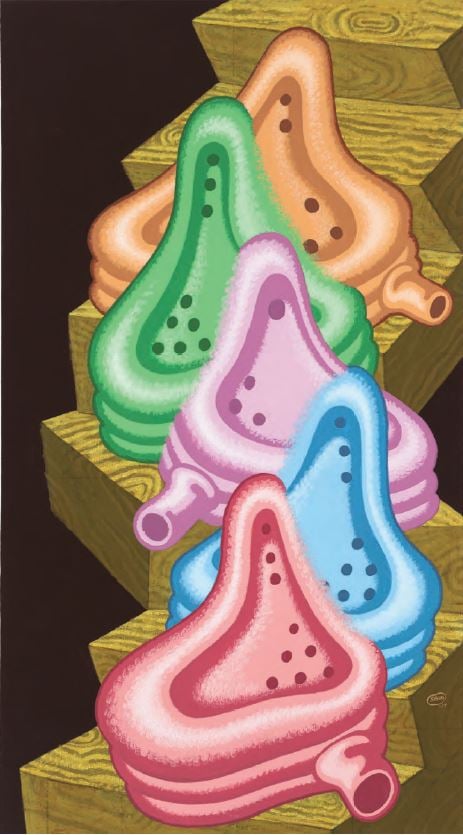
Peter Saul, Urinal Descending a Staircase (2017). Image courtesy Francis M. Naumann Fine Art, LLC.
Peter Saul’s painting is a candy-colored mashup of Duchamp’s two most famous works: Nude Descending a Staircase, a scandal in 1913, and Fountain, a scandal in 1917.
![Pablo Echaurren, <em> U/siamo tutti Duchamp [We all are/use Duchamp]</em> (2015). Image courtesy Francis M. Naumann Fine Art, LLC.](https://news.artnet.com/app/news-upload/2017/04/Echaurren-768x1024.jpg)
Pablo Echaurren, U/siamo tutti Duchamp [We all are/use Duchamp] (2015). Image courtesy Francis M. Naumann Fine Art, LLC.
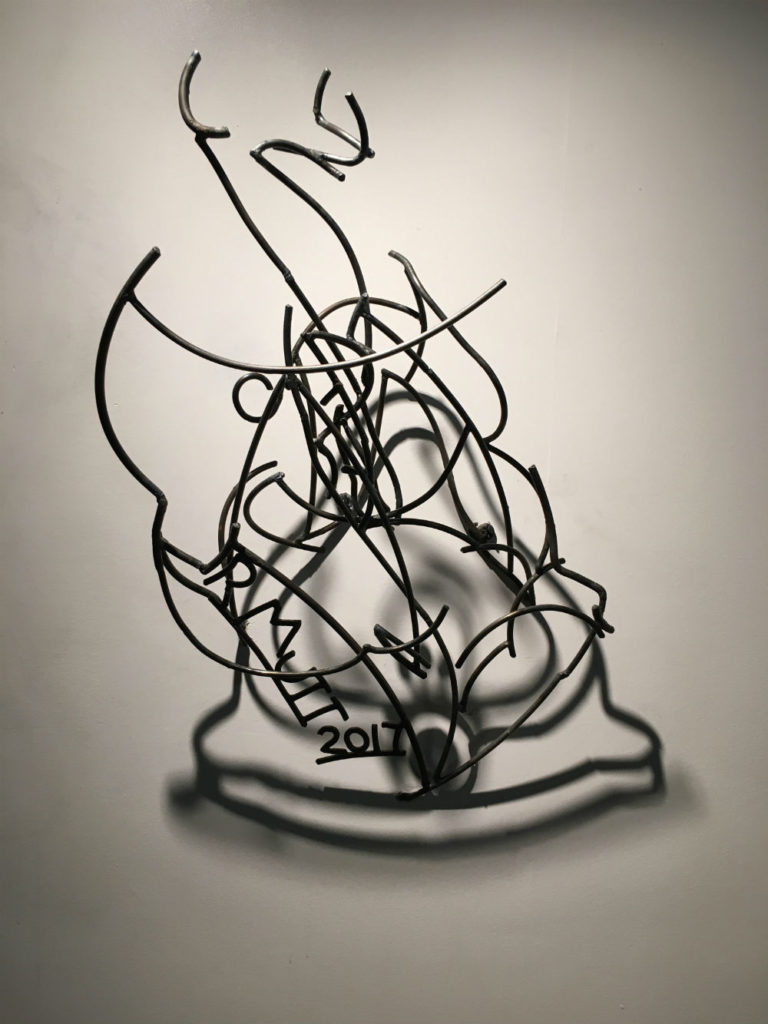
Larry Kagan, R Mutt 2017 (2017). Image courtesy Francis M. Naumann Fine Art, LLC.
Larry Kagan’s abstract, twisted metal sculpture looks like chaos—but under just the right light, it casts the form of Fountain onto the wall behind it, a physical metaphor for the long shadow cast by Duchamp’s work.

Carlo Maria Mariani, Composition 2 (1988). Image courtesy Francis M. Naumann Fine Art, LLC.
This “conceptual painting” by Carlo Maria Mariani (b. 1931) combines figurative Surrealism, the neoclassical nude, and, of course, Fountain, into something truly weird.
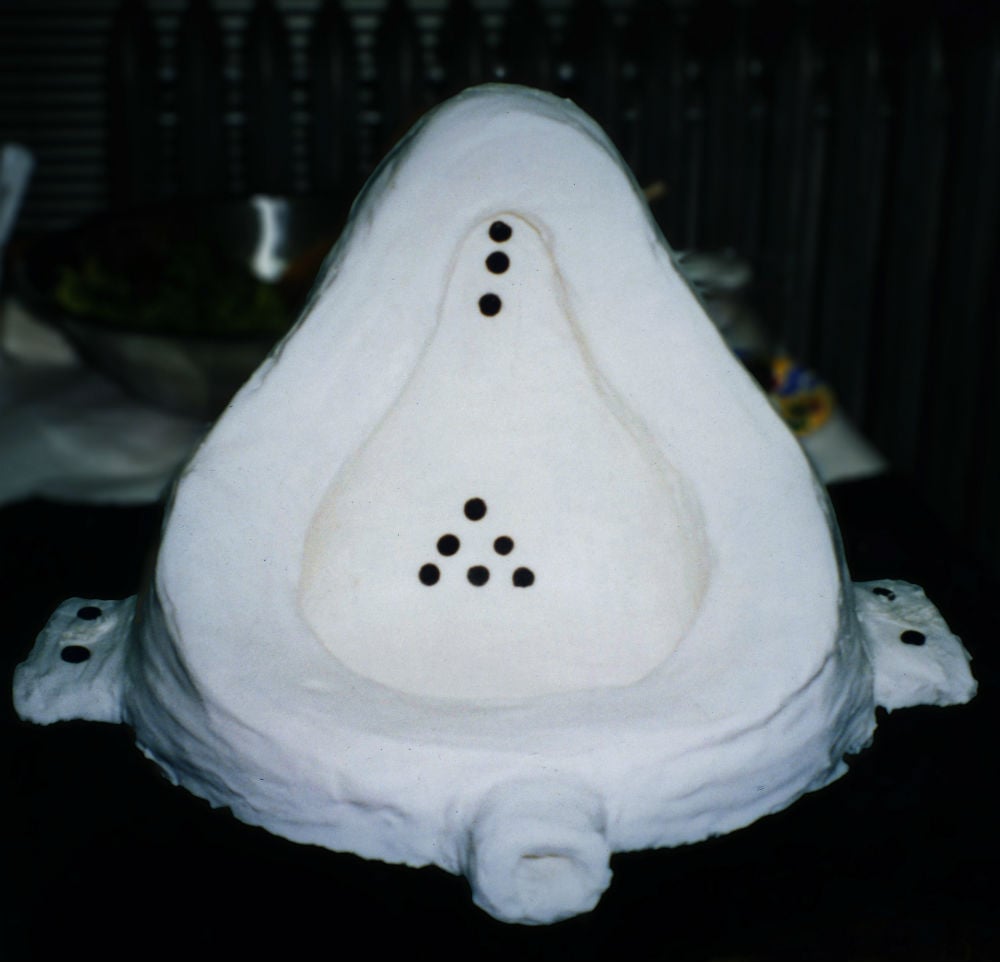
Sophie Matisse, Urinal Cake (1998). Image courtesy Francis M. Naumann Fine Art, LLC.
A tasty homage to Duchamp, composed of meringue bricks, white icing mortar, and chocolate chips for the drain holes, complete with a delicious pun of a title. According to Naumann, “Matisse insists that there are no instructions as to how the cake should be eaten, and that whomever cuts the first slice will dictate its fate.” (And, yes, the artist is related to Duchamp’s great Modern peer—she’s the great-granddaughter of Henri Matisse.)
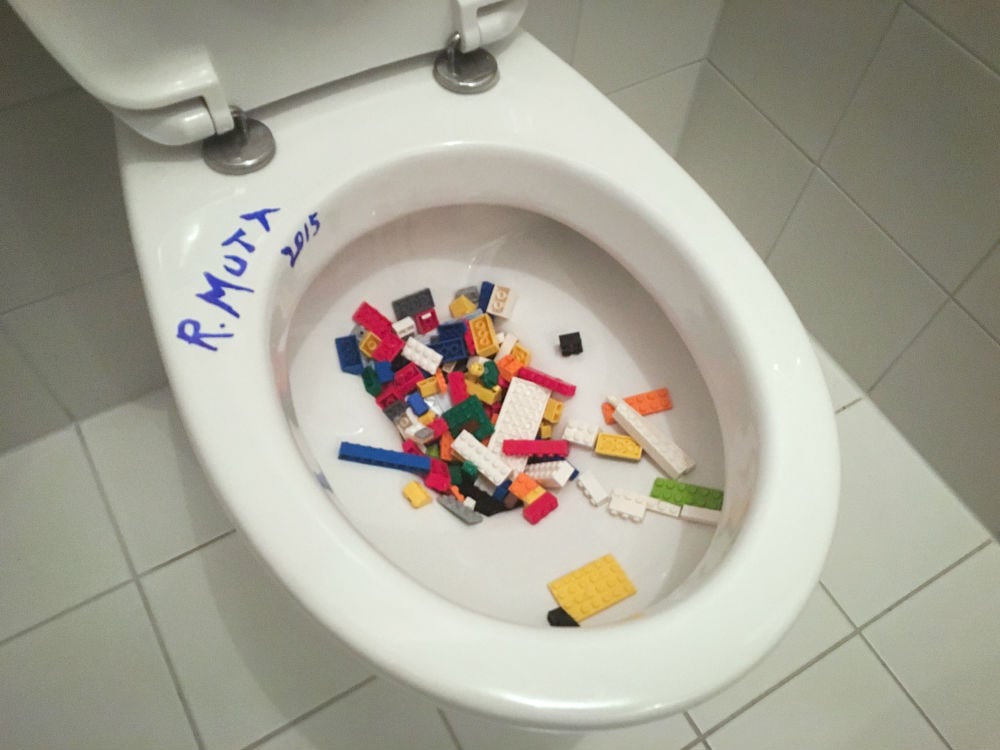
Ai Weiwei, Letgo (2015). Image courtesy Francis M. Naumann Fine Art, LLC.
This photograph by the Chinese firebrand was technically his response to the 2015 controversy that saw the Lego corporation attempt to ban him from bulk ordering its bricks for his political art installation at the National Gallery of Victoria. But it clearly reflects the longtime influence of Duchamp on his art, as well.
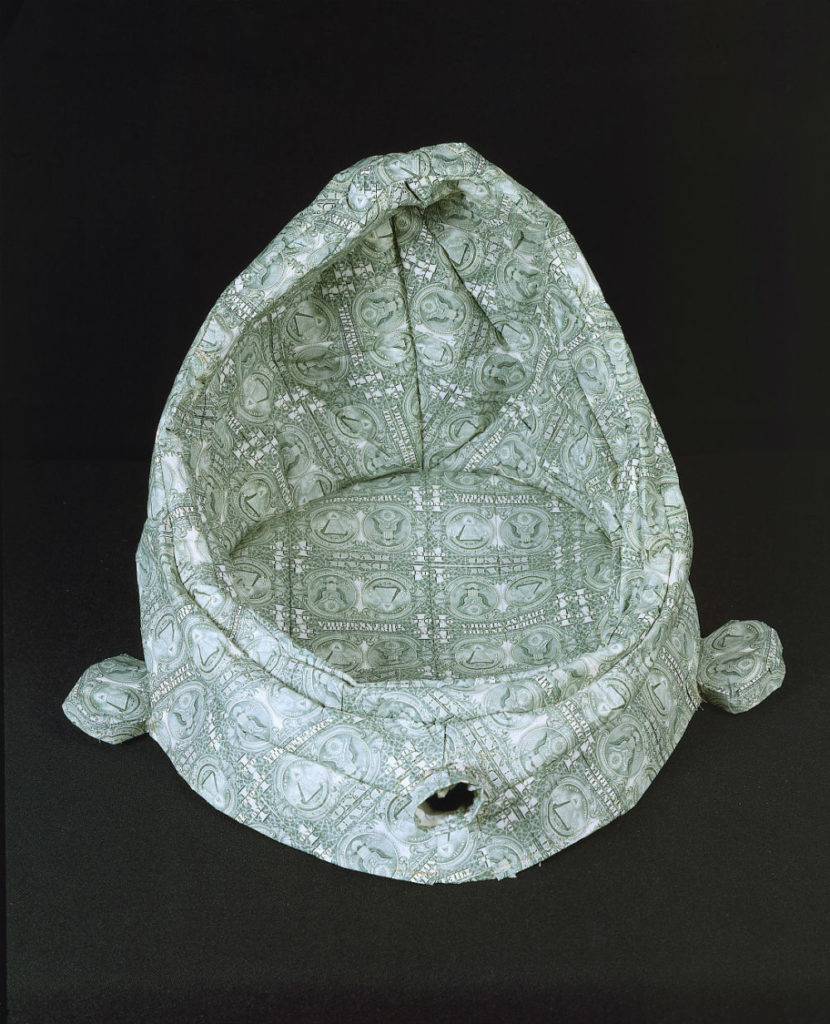
Ray Beldner, Peelavie (v.2) (2003). Image courtesy Francis M. Naumann Fine Art, LLC.
From Beldner‘s “Counterfeit” series, in which he remakes iconic works of art out of hand-stitched US currency, comes this handmade version of Duchamp’s famous readymade.
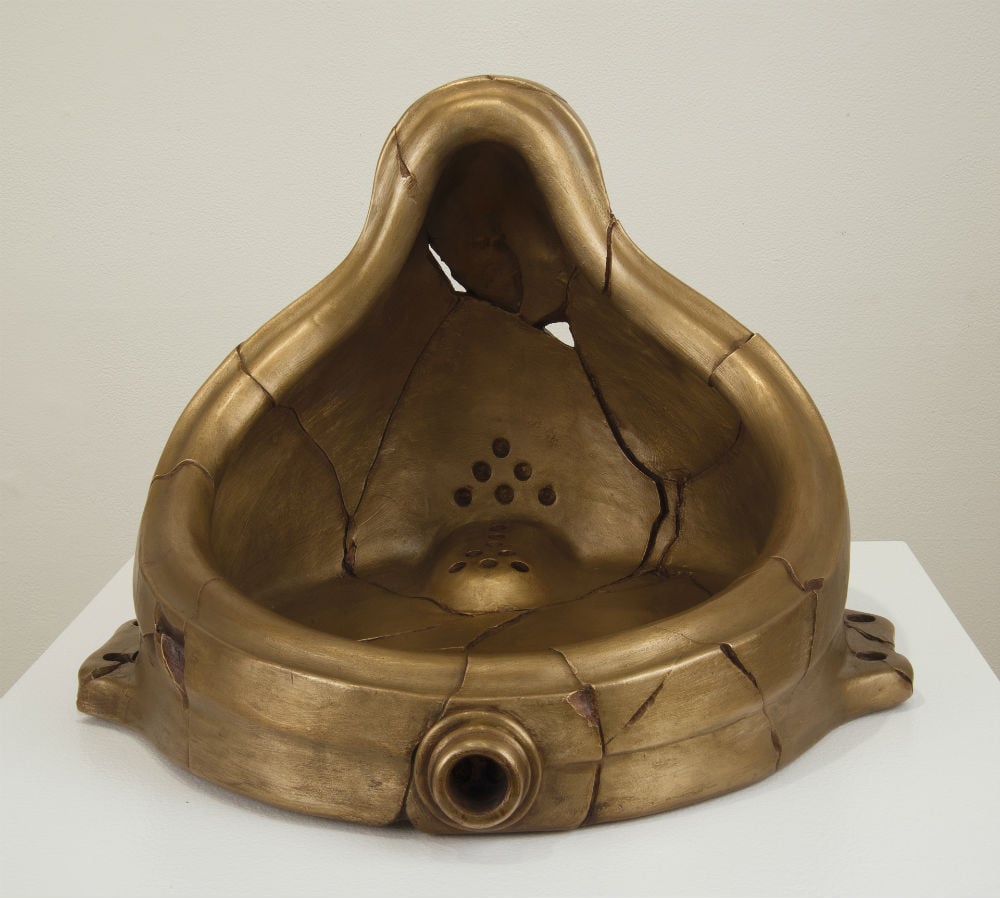
Mike Bidlo, Fractured Fountain (Not Duchamp Fountain 1917) (2015). Image courtesy Francis M. Naumann Fine Art, LLC.
Bidlo is one of Duchamp’s most literal modern-day heirs, making the remaking of other people’s art his main thing. This bronze sculpture, however, is actually a cast of a smashed replica of Fountain.
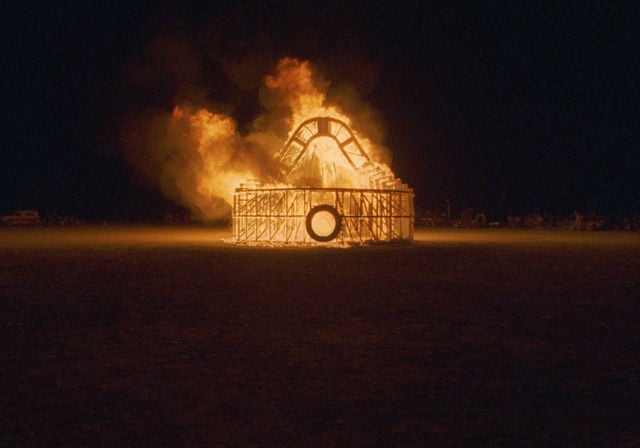
Saul Melman, Johnny on the Spot (2003). Image courtesy Francis M. Naumann Fine Art, LLC.
In 2003, an architectural version of Fountain made its way to the Black Rock desert in Nevada for Burning Man, courtesy of the artist Saul Melman. About 15,000 people watched this giant-sized, urinal-themed pavilion burn, according to the artist.